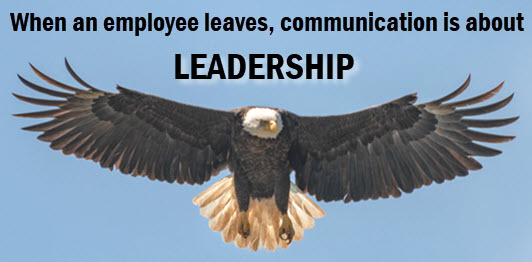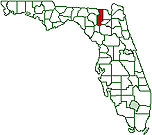How to Communicate When an Employee Leaves
Essential: a Standard Operating Procedure
Posted April 28, 2021 09:10 am | Op-Ed

Photo: Richard Lee -
Unsplash | Columbia County Observer graphic
Recently, I realized my organization had more gaps in communication than I would like in how we handle employees who have left the organization. I am sharing some of the communication gaps, which we are now closing.
Holes get filled.
Related
Article:
•
Lake City IT Director Quits
- Tells City Manager:
“Another attack would destroy my career,
jeopardize the City and my family.”
If there is a communication gap, it will be filled — many times with misinformation, confusing information, and things that are not true.
When a person resigns, sometimes we let too much time go by before sending out information about that person’s leaving.
It is unlikely that the person quitting their job hasn’t shared the news with others.
If the person was looking for another job, some of their coworkers likely knew they were looking or interviewing.
Once they let their boss know they are leaving, the rumor mill kicks in if the boss doesn’t announce the departure quickly.
The more quickly the leader moves to make the announcement, the more they can control the narrative.
Here are suggestions for a smooth transition for employee departures:
• When a person resigns, discuss the communication process with them. This discussion is very important if the person leaving is a supervisor.
If you are comfortable, allow their supervisor to let their employees know before a companywide announcement goes out. Be specific about the scheduling of the announcement. Set specific times when the supervisor will let his/her employees know and when the general announcement will go out.
• Do not wait till you have a plan. If you know you are going to fill the same position, make that part of the announcement. If you will take this time to look at the role, duties, etc., and decide the next best steps, be sure to say that.
Something like this works nicely: “With Bob’s leaving, it makes sense to step back and review the duties and responsibilities of that role in our organization. In the next several days, I will be meeting with many of you to get your thoughts. If you have specific suggestions, please set up a time to give me your feedback. I value your input.”
When someone leaves the organization, it is a really good time to see if things need to be adjusted.
• How long should a person stay once they have resigned?
It is common for an hourly employee to give two weeks’ notice and a person in supervision to provide 30 days. This can vary. The question is, on what terms is the person leaving?
Most people are already mentally moving on to their new role when they resign.
Sometimes, we get hung up on the idea that if we pay them, they should work their entire notice. This can work well with some people. However, there are times to move the transition up. Pay the person the amount they would make if they stayed the entire notice period, but have them transition out as soon as you can. This allows them to move to their next role and allows your organization to move forward.
I have seen organizations allow an unhappy person to stay the entire notice and create significant disruption in their final days on the job.
• Having a standard operating procedure in place on how resignations are handled is invaluable. It allows your leaders to train on what looks right in these situations, and it can help avoid a lot of wasted time and headaches.
---------------------------
Quint Studer serves as Entrepreneur-in-Residence at the University of West Florida, Executive-in-Residence at George Washington University, and Lecturer at Cornell University. His handbook "The Busy Leader’s Handbook: How to Lead People and Places That Thrive" is filled with tips, tactics, and need-to-know insights.

 By
Quint Studer
By
Quint Studer